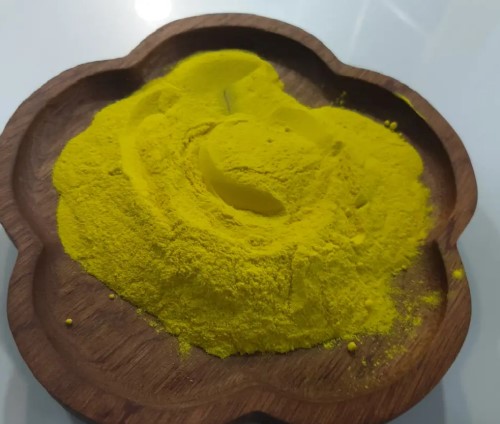Potassium Ferrocyanide In Salt: A Safe And Approved Food Additive
Introduction
Potassium ferrocyanide is a food additive utilised in salt manufacturing and has been a subject of debate for many years. Although it is widely used in many countries, safety concerns and potential health risks related to its consumption have been raised. This article examines these concerns in detail to provide an understanding of potassium ferrocyanide.

Figure 1. Potassium hexacyanoferrate (Ferrocyanide)
Understanding Potassium Ferrocyanide
Potassium ferrocyanide is a chemical compound that is frequently used as a food additive in salt. It is also known as yellow potash powder and has the molecular formula K4[Fe(CN)6]. This compound contains cyanide ions (CN-) and is produced from iron and cyanide. It appears as colourless to pale yellow crystals and is highly soluble in water.
It is employed in food production to prevent salt particles from clumping. It reduces the solubility of sodium chloride in water and thereby prevents salt agglomeration. Consequently, recrystallisation and caking are prevented, which maintains a granular texture and ensures product usability. It is therefore used in various salt formulations, including table salt and speciality salts such as sea salt.
Furthermore, the use of potassium ferrocyanide in foods is strictly regulated by international food safety authorities. Organisations such as the European Union and the United States Food and Drug Administration have established guidelines to ensure its safety.
Potassium Ferrocyanide: Safety Concerns
Despite its authorisation, concerns have been raised regarding the potential release of cyanide, a toxic substance. However, potassium ferrocyanide is safe for consumption when it is used within the specified guidelines. The reasons are as follows:
Safely Bound Cyanide:
The cyanide in food‐grade potassium ferrocyanide remains safely bound due to its strong internal bond. It forms a stable compound with the iron atom, thereby reducing the potential release of free cyanide. Additionally, breaking the chemical bonds between potassium and ferrocyanide requires strongly acidic conditions. Given that stomach acid in the human body is relatively weak, the reaction does not occur.
Minimal Release of Cyanide:
When used as intended and within legal limits, the quantity of potassium ferrocyanide in products is minimal and does not pose a significant health risk. Studies have shown that the amount of cyanide released from potassium ferrocyanide is minimal and does not represent a significant risk to consumers. [1]
Regulatory Safety Standards:
Authorities such as the US Food and Drug Administration (FDA) and the European Food Safety Authority (EFSA) have established safety standards and acceptable levels for potassium ferrocyanide in foods. The World Health Organization (WHO) has confirmed that potassium ferrocyanide is safe for consumption when it is used in approved quantities. Consequently, international regulators consider potassium ferrocyanide to be a safe food additive.
Potassium Ferrocyanide: Allergic Reactions
Another concern is the potential for allergic reactions to potassium ferrocyanide. Some individuals may experience allergic reactions; however, these cases are rare and generally mild. The symptoms typically include skin rashes or itching and are not life-threatening.
It is also noteworthy that potassium ferrocyanide is not added to all salt products. In many cases, it is only added to certain types of salt, such as table salt or kosher salt, rather than to others like sea salt. Consumers who are concerned about its use may choose products that do not contain this additive.
In addition to its use in salt production, potassium ferrocyanide is employed in photography and as a laboratory reagent. For these applications, the compound is not intended for human consumption, and different safety standards apply.
Conclusion
In conclusion, potassium ferrocyanide is an authorised food additive that has been used in salt production for many years. Despite the concerns raised, scientific studies and regulatory authorities confirm that the compound poses no significant health risk when used within approved limits. For further information, please visit samaterials.co.uk.
Reference:
[1] European Food Safety Authority (2018). Reassessment of sodium ferrocyanide (E 535), potassium ferrocyanide (E 536) and calcium ferrocyanide (E 538) as food additives. ESFA Journal. https://doi.org/10.2903/j.efsa.2018.5374

 Bars
Bars
 Beads & Spheres
Beads & Spheres
 Bolts & Nuts
Bolts & Nuts
 Crucibles
Crucibles
 Discs
Discs
 Fibers & Fabrics
Fibers & Fabrics
 Films
Films
 Flake
Flake
 Foams
Foams
 Foil
Foil
 Granules
Granules
 Honeycombs
Honeycombs
 Ink
Ink
 Laminate
Laminate
 Lumps
Lumps
 Meshes
Meshes
 Metallised Film
Metallised Film
 Plate
Plate
 Powders
Powders
 Rod
Rod
 Sheets
Sheets
 Single Crystals
Single Crystals
 Sputtering Target
Sputtering Target
 Tubes
Tubes
 Washer
Washer
 Wires
Wires
 Converters & Calculators
Converters & Calculators
 Chin Trento
Chin Trento



